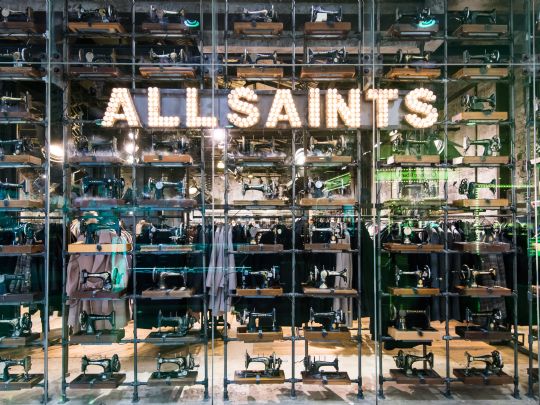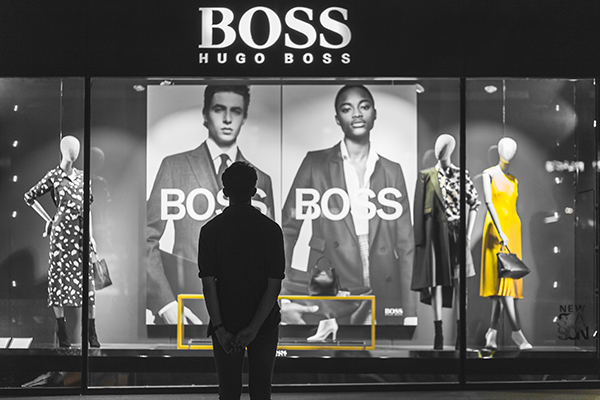Bricks and mortar stores are increasingly finding that they have to go the extra mile to compete with their online rivals. One way of doing this, Hannah Prevett observes, is to use technology to create a great in-store experience
The most technologically advanced high fashion store in Britain opened its doors in September 2012. Combining elegant design and digital high-tech wizardry, Burberry appeared to have the 21st century in-store experience all sewn up. For the then chief executive, Angela Ahrendts, who left to join Apple in 2014, digital was a core part of the company’s strategy and 121 Regent Street would be the jewel in Burberry’s crown.
Covering four floors, the London flagship store is Burberry’s biggest in the world. Described as where “the digital world meets the physical”, it includes 500 speakers and 100 screens – one of which towered at 22ft, which was believed at the time to be the largest in a shop. That’s not forgetting a hydraulic stage and clever RFID microchips in some of the clothes which mean that when shoppers wearing the garment approach one of its so-called “magic mirrors”, the mirror transforms into a screen and shows a film of how the garment was made and what it looked like on the catwalk.
Christopher Bailey, the then chief creative technology who’s now also chief executive, told ES Magazine: “Behind all the craftmanship you have miles and miles of cabling and technology, all hidden. You have innovation in this beautiful, historic space. I love the contradiction of a historic, heritage-driven, 156 year old brand with real modernity.”
For a long while, it’s been the luxury brands that have been leading the charge when it comes to digital in-store experience. That’s down to a combination of factors, says Dan Thornton, product marketing consultant at Hughes Network Systems. For a start, consumers forking out for luxury products will probably want to see them in the flesh. “If something costs £100, you don’t mind buying it online, but if you’re buying a handbag that’s £1,500, you want to touch it and feel it to make sure it’s right for you,” he explains.
Hughes says it’s mid-market retailers who need to up their game when it comes to the in-store experience. “The luxury brands still have a better bricks and mortar focus for people, then with the low-cost retailers like 99p or the pound shops people will always go there to buy because you can’t buy it online. So the mid-range retailers are the ones that need to embrace in-store media and now that the cost is coming down, they’ll be looking more at how they can get a return on investment,” he says.
For mid-market retailers, they may do better to look at the likes of Argos, rather than Burberry. Argos has become increasingly digitally focused in the past five years, and now has a network of technology-enabled stores. For Nikk Smith, CTO at Pixel Inspiration, the digital signage agency, Argos is the one to beat when it comes to upping the in-store ante. “Their implementations are certainly not as theatrical as some of the luxury brands, but they have totally transformed their everyday in-store experience using digital technologies, across a large cross-section of their estate rather than a few flagship stores,” says Smith.
Further, what is right for a luxury retailer such as Burberry won’t be the solution for a High Street brand like Topshop or Marks & Spencer. Technology and marketing teams must start out by ascertaining the goals for any in-store project – but that doesn’t mean to say they should get too hung up on the numbers, explains Paolo Pedrazzoli, EMEA marketing operations manager at 3M Touch Systems. “Measuring ROI of in-store [media] is complex and depends on having the right back office systems, but yes, there are ways to achieve this. However, while in-store media can help drive sales, footfall and dwell-time, it is also a powerful way to position a brand and enhance its market reputation,” he says. “That value should not be underestimated.
Tech literacy
Multi-channel customers are so used to interacting with technology that they expect stores today to be littered with tech touchpoints. “It’s essential that retailers embrace the latest technology. In their homes, working lives or on the move, consumers are used to having very advanced technology and content. They don’t expect to take a technology step backwards when they enter a store,” says Pedrazzoli.
However, the level of tech literacy among customers and the fast pace of change can be daunting for retailers, explains Hughes. “Consumers use technology far quicker than businesses do, they have the ability to move very quickly. So what happens is consumers come in and they use a bit of technology so the business or retailer will say, ‘That’s a great idea; we should implement that.’ Then they think about it for a couple of months and try to put a plan together and in the meantime consumers have moved on to the next technology. What they tend to do then is not do anything,” he says.
It’s not all about implementing the smartest new releases though, says Smith. “It’s not necessarily important to use the latest technology in-store. How many iPads have we seen all sitting idle or switched off, simply because someone thought that they had to integrate the latest tech? What is important is that any technology that is used creates a well thought-out, seamless and complementary experience, not just access to a brand’s website.”
“The role of all of these innovations should always be to enhance the shopper journey and experience, but the specifics of how this is achieved are typically very much led by the brand itself. Some brands are focused on sales uplift, some on creating brand equity with every combination in between those two extremes. The key focus from our perspective is to ensure that all the channels work in a symbiotic way, so that the success of one does not compromise another.”
What is certain is that in-store media use is headed only one way. Pedrazzoli says it’s full steam ahead for in-store screens. “Multi-touch AV systems are going to become commonplace in all kinds of retail environments. Overall, adoption of in-store media will continue to increase, because retailers have to work even harder to keep customers engaged and to compete with the online shopping experience.”
He predicts that multi-touch screens will be the next big thing. “These can create a strong point of interest, as well as the ability to relay more information at the same time,” he explains. “These can create a strong point of interest as well as the ability to relay more information than would be otherwise possible, all in a highly visual and interactive way. For instance, on the same screen, one customer can be looking at a product-related video, while her two children play a computer game at the other end of the screen – which can be up to 55 inches in diameter. Also, creating a multi-user experience can be used by sales staff to interact with customers in a far more powerful way than possible with traditional tools.”
Staff training is an important part of a successful in-store strategy, says Thornton. “Consumers have the ability to find out information from the internet and are very well educated about products and service. They expect staff to be just as educated – or more so. If you bring employees up to speed it gives them more confidence in their ability to sell so they’re happier and it gives a better consumer experience.” Everyone’s a winner.
Latest News
-
Asos revenue drops 18% as it targets profitability boost
-
Adidas launches limited edition NFT collection
-
Potential Stonegate collapse ‘raises questions’ about Asda’s future, says trade association
-
Harvey Nichols hires McQueen EMEA boss as CEO
-
Trade body calls on PCC candidates to get tough on retail crime
-
Walmart rolls out autonomous forklifts in distribution centres
The Very Group
Smarter merchandise planning across the retail value chain
In this webinar, Matt Hopkins, Head of Retail Solutions, Board, Catherine Tooke, SVP Product & Planning, Sweaty Betty, and Subir Gupta, Managing Principal, Thought Provoking Consulting join Retail Systems Editor Jonathan Easton to discuss the findings of the recent Retail Systems report The Merchandise Planning Challenge: How are retailers harnessing technology to optimise planning and retain customers? and examine the innovations that are improving retail planning.
© 2019 Perspective Publishing Privacy & Cookies















Recent Stories